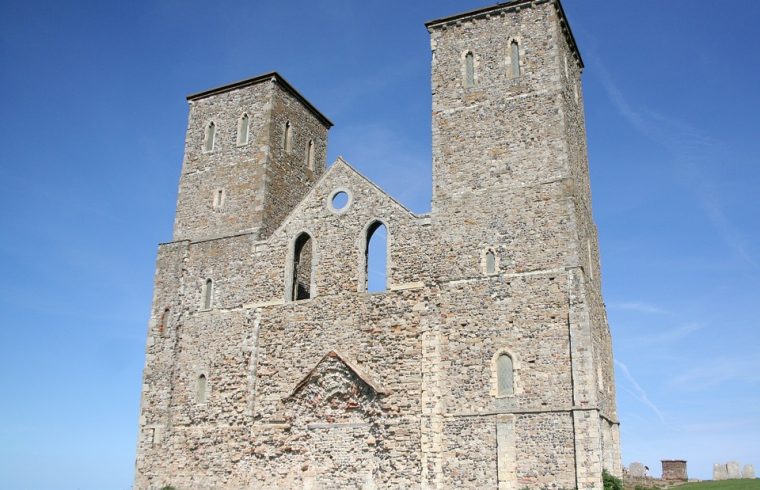Three out of four British families took a staycation, or planned to take one, in 2017 – the numbers had grown since the 70% who did so the year before, according to a report in the Independent newspaper on the 25th of August 2017.
A weaker pound and worries about the effects of Brexit on the exchange rate with other European currencies are likely to see staycations becoming even more popular this year.
But there is far more appeal in a staycation than just saving a few pounds. If you are a history buff and want to investigate some of England’s rich and diverse past for yourself, the Isle of Thanet in Kent is likely to offer more than enough interest.
Broadstairs may offer an ideal base from which to enjoy any historically themed staycation since it is the centre of the three main towns of Thanet (Margate to the north and Ramsgate to the south are the other two). More to the point, for any history buff looking to make the most of a stay in this part of Kent, there are a number of holiday lets in Broadstairs, reflecting the recent revival in fortunes of this perennially popular seaside resort.
The history
The Isle of Thanet is steeped in history, with archaeological evidence pointing to ancient settlements throughout the Stone, Bronze and Iron Ages. In fact, Thanet has more Bronze Age burial mounds than anywhere else in Britain, which could have been seen right out to sea.
But it is the proximity of this part of England to the neighbouring continent that opened the door for some of the more lasting impacts on the history of the country.
The Roman invasions
It is only relatively recently – according to a story in the Express newspaper on the 29th of November 2017 – that Pegwell Bay, just to the south of Ramsgate, has been identified as the most likely landing site for the first Roman invasion more than 2,000 years ago.
This was at a time when Thanet was still justifiably called an island, separated from mainland Kent by the Wantsum Channel – then up to two miles across in places. But the shallow, marshy stretches of the Wantsum Channel were unlikely to have proved much of a barrier to the determined Roman legions.
Evidence of a large Roman fort has been excavated at Ebbsfleet and dated to around 55-50 BC. A second Roman invasion, almost 100 years later, proved the tipping point for an occupation that lasted for the next 400 years.
Reculver Towers and Roman Fort – while just outside Thanet in Herne Bay – is another place worth seeing and the site of one of the earliest Roman forts built against Saxon raids on the ‘Saxon Shore’.
If you are feeling energetic, you can park your car at Minnis Bay in Thanet and enjoy an hour and half amble along the coastline to Reculver.
Saxon invaders
As the Roman occupation came to an end, so other invaders – such as the Saxons from what is now Germany and Holland, the Angles from southern Denmark and the Jutes from northern Denmark.
The Jutes, Horsa and Hengist, made a more lasting impression after the King of the Britons, Vortigern awarded the Isle of Thanet to them for their help in warding off other hostile tribes of Britons.
You can see a full-size replica Scandinavian Longboat complete with shields at Pegwell Bay, which sailed from Denmark to Thanet in 1949 to celebrate the 1,500th anniversary of the Anglo-Saxon invasion of Britain.
Land and sea
In the years that followed invasions, the Isle of Thanet reflected a quintessentially English path of development – farming the land and fishing the fruits of the sea.
For these twin dependencies of survival, the coastal villages of Margate, Broadstairs and Ramsgate were ideally placed.
As the 18th century approached, Thanet offered more than the economic essentials of farming and fishing, though, as London’s wealthy and aristocracy began to discover the benefits of healthy sea air and bathing. They brought their wealth to the coastal towns, where something of a building boom developed. The resorts of Margate, Broadstairs and Ramsgate blossomed.
If you stroll around Broadstairs, you can see evidence of where Charles Dickens stayed. Or visit Margate to enjoy the stunning sunsets enjoyed by artist JMW Turner.
Although their fortunes dipped when the holidaying habits of many Britons changed in the latter half of the 20th century, thanks to the availability of cheap package holidays abroad, there has been a more recent revival as increasing numbers of staycationers and daytrippers rediscover the rich heritage of this part of England.
With beautiful sandy beaches, lots of history, and a bracing sea air, a staycation in Thanet may be worth considering.

